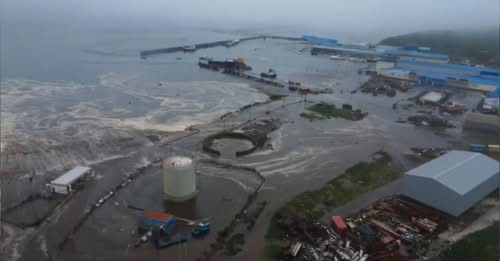
Just offshore from Russian’s far-eastern Kamchatka peninsula, a major earthquake shook the region on Wednesday. At magnitude 8.8, it released several times more energy than the largest nuclear bomb ever detonated.
“It’s a massive-scale earthquake,” says Harold Tobin, the director of the Pacific Northwest Seismic Network at the University of Washington.
In fact, Earth hasn’t seen a quake this big since 2011, when a magnitude 9.1 tremblor off the coast of Japan resulted in the Fukushima nuclear disaster. “It’s within the top 10 largest earthquakes ever recorded by seismometers,” says Steven Hicks, an earthquake scientist at University College London. It didn’t just cause the seafloor to jolt upward. “It broke the seafloor,” he says.
And immediately, the danger was clear: The seafloor break generated a dangerous, ocean-spanning tsunami. As a result, tsunami warnings were speedily issued for many of the countries bordering the Pacific Ocean, including the entire western seaboard of North America, as well as parts of Central and South America.
(Here’s what to do to prepare for a tsunami.)
This earthquake took place along a tectonic schism that’s known for creating truly devastating temblors and tsunamis. So far, it looks like the worst-case scenarios of widespread death and devastation haven’t played out. But the tsunami could still impact various shores throughout the day, and powerful aftershocks are occurring, so the danger hasn’t passed just yet.
What caused this megaquake?
Such extreme events are called megathrust earthquakes or megaquakes because of their sheer size and where they occur. Its epicenter falls within a geologic battleground known as a subduction zone. Here, the Pacific tectonic plate collides with and sinks below the Eurasian plate in what is known as a subduction zone. “Where these two plates collide, the megathrust fault becomes stuck and locked, storing up the accumulated plate motion for hundreds of years,” says Hicks. “This stored energy suddenly gets released in great earthquakes.”
So, it’s not surprising that a major earthquake took place off the coast of Kamchatka. “Big quakes have happened here in the past, so with this one, we knew to expect something there,” says Christine Houser, a geophysicist at the Tokyo Institute of Technology.
